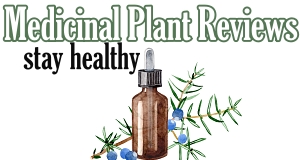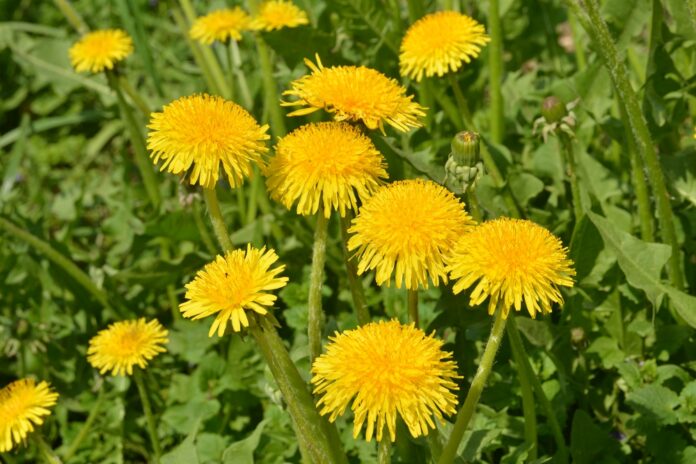When I was a kid growing up in Brookfield, Illinois, a dandelion in the lawn was not considered a good thing. In fact, flowering dandelions were thought of as nasty weeds to be eliminated before they turned to seed and spread in the wind.
But the dandelion (Taraxacum officinale) wasn’t always thought of as lawn garbage. As a child, I never could have imagined the “lowly” dandelion’s true identity: A majestic herb used for centuries as a key medicinal plant in the treatment of just about everything.
They were well known to ancient Egyptians, Greeks and Romans, and have been used in Chinese traditional medicine for over a thousand years. There is evidence that dandelions most likely arrived in North America on the Mayflower brought to the New World for their medicinal benefits.

Only in the 20th century did humans decide that the dandelion was a weed. In fact, gardeners used to weed out the grass to make room for the dandelions. Dandelions were world-famous for their beauty. In fact, dandelions were a highly respected garden flower in Europe, and the subject of many poems. In Japan, horticultural groups were formed to enjoy the beauty of dandelions and to develop new varieties for gardeners.
Dandelions might be the most successful plants ever. They are survivors that now flourish around the world.
Dandelions are fast growers, the sunny yellow flowers going from bud to seed in days. But they are also long-lived – an individual plant can live for years, so the dandelion lurking in a corner of the playground might be older than the children running past it. The root sinks deeper over the years, and can go down 15 feet.
Additionally, the root clones when divided. A one-inch bit of dandelion root can grow a whole new dandelion. Dandelion leaves push their way through gravel and cement, and thrive in barren habitats.
Dandelions prefer sun and disturbed soil. Like a domesticated animal, dandelions thrive in human environments. That’s why they do so well in yards, construction sites, roadsides and parking lots.

Dandelion root has long been used to treat digestive conditions. Some people use dandelion as a traditional remedy for constipation, to promote digestion, stimulate appetite, and balance the natural and beneficial bacteria in the intestines.
Dandelions might also increase the release of stomach acid and bile to aid digestion, so if you have trouble digesting fats, it may help with gut function by promoting detoxification in your liver pathways.
Dandelion’s believers also see this medicinal plant as a diuretic that helps the kidneys clear out waste, salt, and excess water by increasing urine production. This plant is thought to inhibit microbial growth in the urinary system helping to balance the urinary microbiome also. Dandelion may also help replace some of the potassium lost in the process.
As a diuretic, some believe dandelion can help with the treatment of prediabetes. Dandelion root is believed to have anti-diabetic properties due to a soluble fiber known as inulin.
Inulin contains a complex carbohydrate known as fructooligosaccharide (FOS) which supports the growth of healthy bacteria in the gastrointestinal tract and eliminates the unhealthy ones. This alone increases insulin sensitivity by slowing the flow of sugar from the intestines to the bloodstream, preventing spikes in either your blood sugar or insulin levels.
Additionally, dandelions are believed to aid in weight loss due to the potassium/diuretic connection. It’s possible that the potassium in dandelion that acts as a diuretic may increase daily urine output. This could lead to a decrease in water weight, which may be helpful for people feeling bloated or suffering from water retention.

Dandelions have also been associated with improved heart health. This includes possibly lowering cholesterol due to certain bioactive compounds in dandelions. Also, because dandelions are a good source of potassium, they may help lower blood pressure (potassium can help reduce blood pressure).
Another possible health benefit is taking dandelions as a general immune booster as the dandelion has antiviral and antibacterial properties. There are also considerable antioxidants in dandelions. Dandelions contain beta-carotene, which is an antioxidant that helps protect cells from damage. The flower of the dandelion is also full of polyphenols, which are another type of antioxidant.
And if that wasn’t enough, another possible health benefit from dandelions is acting as a topical to protect against skin damage from sunlight, aging and acne.

Dandelion root supplements are available in drugstores and vitamin supplement stores, along with tinctures, teas, extracts, ointments and powders.
However, throughout history, dandelion leaves, stems and flowers have been consumed in their natural state eaten cooked or raw.
Dandelion root can be dried, ground and consumed as a tea or coffee substitute. Dandelion root is traditionally harvested in the fall when concentrations of inulin are at their highest.

Because the root absorbs chemicals in the soil, it’s best to avoid harvesting roots alongside roads, driveways, septic tanks, pools, air conditioning units or barbecue grills.
If you don’t plan to use the harvested roots immediately, you can dry them in a dehydrator and store them in a glass jar for up to a year. If dried correctly, the outer flesh should have a dark color while the inner flesh should remain a creamy white.
There are no guidelines for the appropriate use of dandelion root in the United States. However, according to the American Botanical Council, in Europe, both the European Commission and the British Herbal Pharmacopoeia recommend the following range of doses considered safe for adults:
- Fresh dandelion root: 2 to 8 grams daily
- Dandelion root powder: 3 to 4 grams mixed with 150 milliliters of warm water
- Dandelion tea infusion: 1 tablespoon of chopped root mixed with 150 milliliters of hot water for 20 minutes
- Fresh root extract: 1 to 2 tablespoons daily
- Dried dandelion extract: 0.75 to 1.0 grams daily

Dandelion root is generally considered safe and well tolerated in adults if consumed in moderation. However, people have been known to experience side effects like heartburn, diarrhea, upset stomach and irritated skin.
Dandelion can also trigger allergic reactions if you are allergic to ragweed, chrysanthemums, marigold, chamomile, feverfew, yarrow or plants in the Asteraceae family (sunflowers and daisies).
Pregnant women, nursing women, and children are advised to avoid dandelion remedies. It’s also a good idea to ask your healthcare provider is there could be any negative interactions with dandelions and prescribed drugs.

A 2016 review of studies from Aarhus University in Denmark suggests that dandelion extract stimulates pancreatic cells to produce insulin, better controlling blood sugar and avoiding hyperglycemia.
The Journal of Nutritional Ecology ad Food Research concluded that “Inculcating traditional medicinal plants like dandelion into the management/treatment of diabetes may help improve the health and well-being of type 2 diabetic patients.”
There’s also evidence that dandelions aid intestinal dysfunctions such as constipation. It’s a proven fact that prebiotics like inulin can improve bowel function by positively influencing intestinal biota. Dandelions are rich in inulin. Consequently, research indicates that dandelion may increase contractions and movement of your gastrointestinal (GI) tract, acting as a treatment for constipation and indigestion.
An animal study published in Neurogastroenterology and Motility shows that dandelions increase gastric motility (the rate food passes through the stomach) by as much as 37%, and as much as 18% more than a pharmaceutical used for constipation.

Regarding heart health, there have been several animal studies that indicate dandelions may reduce cholesterol. One study examined the effects of dandelion consumption in rabbits. Its results found that dandelion root and leaf could help lower cholesterol in animals on a high-cholesterol diet.
Another study in mice found that dandelion consumption reduced total cholesterol and levels of fat in the liver, which prompted researchers to conclude that dandelions might help treat obesity-related nonalcoholic fatty liver disease.
As an immune system booster, the empirical evidence points to dandelions having antimicrobial and antiviral properties, which may help our bodies fight infection.
Multiple studies have found that dandelion extract significantly reduced the ability of viruses to replicate, and some of the active compounds in dandelion might protect against various harmful bacteria.
Studies are also supportive of the claims that dandelions may promote healthier skin. A key reason for aging skin is the slow-down in the production of viable new skin cells. Test tube studies have shown that dandelion root extract may slow down the aging process by increasing the generation of new skin cells.
Still more studies have indicated that leaf and flower extracts from dandelions protect against skin damage before of just after exposure to sunlight.
Acne sufferers could also benefit from dandelion extract, which may reduce skin inflammation and irritation while also increasing hydration and collagen production.

I feel bad for having ever doubted the integrity of dandelions when clearly they have been here all along just to help us.
Anthropomorphisms aside, there is ample empirical evidence that dandelions have an impressive oeuvre of health benefits. Dandelion extract has been especially well received in studies (although there needs to be more human studies rather than just animal ones).
As it turns out, dandelions are also good for your lawn. Their wide-spreading roots loosen hard-packed soil, aerate the earth and help reduce erosion. The deep taproot pulls nutrients such as calcium from deep in the soil and makes them available to other plants.
In other words, dandelions actually fertilize our precious lawns.

However, if you absolutely can’t live with dandelions in your lawn, try this: Let the grass grow 3 or 4 inches tall to shade out the sun-loving dandelions, or use specialized tools like the Weed Hound to have a thriving, healthy chemical-free yard that is safe for humans, pets and wildlife.



